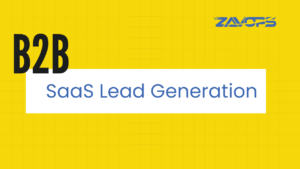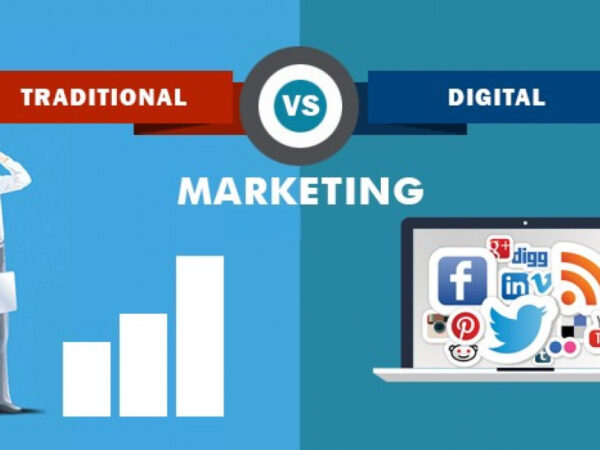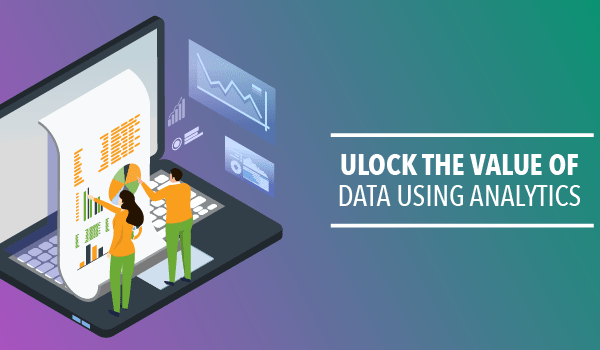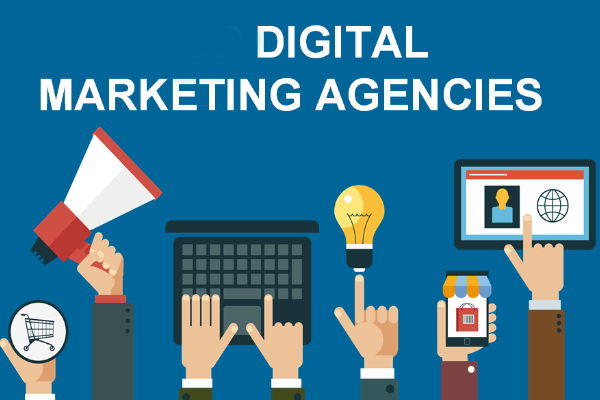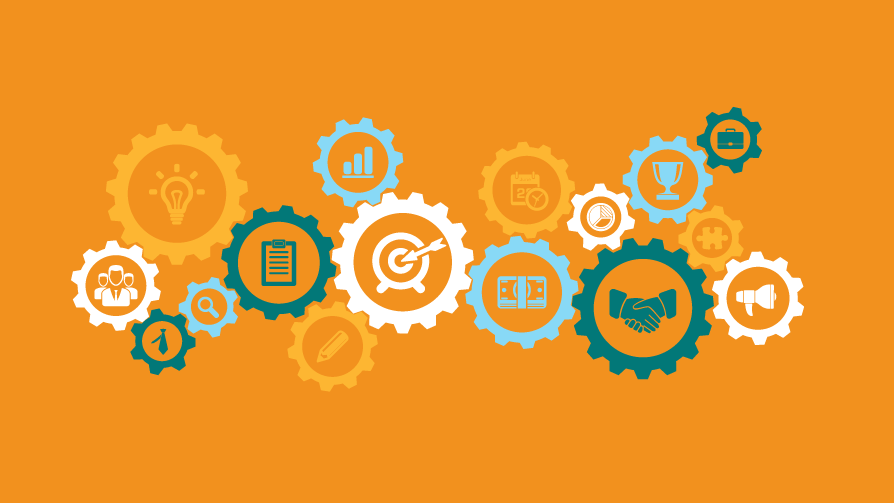
A Complete Guide to Choosing a Marketing Automation Platform for your Business
Introduction
As a marketer, have you ever felt that you are doing a lot of little things that are extremely important for your marketing activities to go smoothly but you end up spending too much time on it? Well, if the answer is yes – then you have probably heard about marketing automation.
Aside from being the latest buzzword, in simple terms marketing automation is the use of software to automate marketing processes, such as customer segmentation, customer data integration and campaign management. Implemented correctly, the right marketing automation solution helps you focus on your customers and accelerate buyers through your sales funnel, with far less human resource and at much lower costs.
The use of automation software can help you centralize your data, deliver a far more relevant (and complex) contact strategy, nurture leads into potential customers and make it easier for you to track the success of your marketing campaigns.
If that’s the case, automating your marketing sounds like a no-brainer, doesn’t it? Especially if it saves central resources lots of time and hassle getting campaigns out and sales in? So, why haven’t all companies achieved results with automation? Firstly, the word automation can be misleading. It does not mean that you sit back and let technology do all the work.
Before we begin the journey, let’s have a look at the definition!
What is Marketing Automation?
Marketing automation is the integration of data and processes from other sales and marketing channels into an organized central platform. A comprehensive marketing automation hub complements and organizes the customer journey. It integrates all of a business’s channels and outreach within the customer database.
The improvements marketing automation offers complement the benefits of customer relationship management (CRM) software. CRM and marketing automation software are mistakenly viewed as interchangeable. Marketing automation software does not store your customer information like a CRM. It is installed in addition to your CRM, like any other integrated application, to operate alongside that data.
Marketing automation platforms function as more than simple support tools. They change the role of marketers by streamlining tedious day-to-day tasks so that more time can be spent driving strategy. Marketing departments use automation software to reduce or even eliminate repetitive tasks including:
- Manual email campaign creation
- Coordination of SMS messaging
- Dissemination of social media posts
- Website widget content
- Online advertisements placement
- Data management and analysis
Like most technology, marketing automation is constantly evolving. When leveraged successfully, it helps drive transactions and generate more revenue.
Difference Between Marketing Automation, CDP and CRM
Building the best tech stack for your business needs is no easy task — and as more solutions pop up and teach stacks increase in complexity, selecting solutions will continue to increase in difficulty. Choosing the right data solution (or even differentiating between them) can be harrowing, so we’ll be breaking down the top 2 platforms marketers use to help you decipher which is right for your needs and help you build a martech stack that works for your needs. Those tools are Customer Data Platforms versus Marketing Automation
| Marketing Automation | CDP | CRM |
|---|---|---|
| Improve customer engagement through prospect segmentation based on past interactions or their interests and preferences. | Data management, which includes integration, validation and cleaning. | Analyzing pipeline and forecasting |
| A unique lead scoring system that helps identify the most promising leads with greater conversion chances. | Identifying and classifying customer attributes and behavior across online and offline systems | Front-office related sales |
| Analytics, generated at the end of each campaign, reflect campaign performance and deliver insights. | Defining customer profiles and their management for future use | Mining for acquiring customers |
| Automatically trigger emails when prospects are most interested in a product or service. You can also schedule email series in a “drip” campaign. | Customer behavior analysis to improve segmentation | “Hit/Miss” scrutiny for a go-to-market strategy |
| Workflow-oriented and mainly focuses on identifying and studying detailed customer behavior to derive data for analytical purposes. | Analyzing customer purchasing history and other behavior for further recommendations regarding content or eCommerce | Customer service (post-sales) |
| Communicates with groups, departments and segments which can also be personalized for one-on-one communication or attracting leads. | Exporting segmented customer lists for deriving business intelligence or executing campaigns | Marketing automation via performance analysis and campaign tracking |
| Predictive analysis for guesstimating customer behavior. | Ease of purchasing through quote-to-cash processes | |
| CRM takes prospects, tracks sales and sales opportunities and manages the ongoing customer relationship. | ||
| Database-oriented and mainly takes care of queries and relationship management. | ||
| Mainly focuses on individual, one-on-one communication such as sales reps to customers. |
1. Marketing Automation Platform
Marketing Automation Platforms make up the broadest category of technology we have discussed thus far, with hundreds or even thousands of these platforms on the market. They do exactly what the name says — automate marketing functions. Every individual platform has different features, different verticals they serve, etc. — so just searching for one based on what kind of business you manage can narrow your search considerably.
And generally, marketing automation is synonymous with campaign management — meaning most of these softwares intake new customer/user data and automatically (or manually) add the individual to a pre-built campaign. Some systems are more sophisticated than others and will adjust the communication flow depending on activity and lifecycle stage, but most require manual list pulling and work for a marketing team to function.
Some of the larger marketing automation players are actually two tools in one attached to a campaign management system. For businesses just starting out, with little customer data and a smaller budget, that can be a great option to ramp up campaigns, but marketers soon begin to feel restricted by the limited options these systems offer and the manual time drains involved in managing the platform.
2. CDP
A Customer Data Platform, or CDP, as defined by the CDP Institute, is “packaged software that creates a persistent, unified customer database that is accessible to other systems.” Essentially, CDPs take all of your different data sources and unify them into a ‘Single Customer View’. This enables businesses to move past looking at their data on a channel by channel (or even departmental) basis and allows marketers and other employees to gain access to a holistic view of every customer.
As channels and data sources have expanded in the 21st century, the gap between marketers and the data they need to be successful has grown. Oftentimes organizations will face significant roadblocks in the form of ownership struggles and back-and-forth between data science/engineering teams and marketing teams struggling to define the rules of engagement with customer data.
To combat these challenges, CDPs were built to provide marketers with data access, activation, control, and speed. Their sole focus is helping marketers deliver more relevant, responsive customer experiences by activating customer data in real-time while cutting out the time-consuming, manual work typically required (and tug of war with data scientists).
Both of these platforms are beginning to evolve and iterate — and that may change. Increasingly, marketing automation platforms offer some sort of database within the platform and certain CDPs, like the SmartHub CDP, are offering a full-service solution for marketers from data unification to predictive intelligence to marketing automation, all in one platform.
3. CRM
A customer relationship management (CRM) system is a platform for managing all your company’s relationships and interactions with customers and potential customers. CRM systems grew out of businesses’ need to manage their customer relationships better: staying connected, streamlining processes, and improving profitability.
CRM predominantly takes care of activities in the second half of the sales funnel, helping customers complete their purchases. CRM helps you track customer data and contact details, monitor their interactions with the brand and manage accounts.
Primarily designed to maintain customer relationships, it records dates, notes, customer engagement, phone conversations and inbound and outbound emails. From a scope perspective, CRM systems define the sources of data that you can integrate, and require you to collect it within a predefined identity structure (i.e. customer ID, email address, cookie). It can take some time to define the data before it can be integrated and used with a CRM system.
Difference Between Marketing Automation and Artificial Intelligence
People frequently use the term ‘Marketing Automation’ and ‘Artificial Intelligence in Marketing’ interchangeably. Both technologies help humans to work more efficiently. However, there is a difference between A.I. Marketing and Marketing Automation.
Automation has a single purpose: To let machines perform repetitive, monotonous tasks or as some people say “to take the robot out of a human”. The end result is a more efficient, cost-effective business and a more productive workforce. Automated marketing promises speed.
Marketing automation follows rules that are pre-programmed by humans. Messages across email, social, etc are sent automatically but instructed by humans according to sets of instructions called workflows.
So how does this differ from Artificial Intelligence? Artificial Intelligence is not based on a set of instructions but is supposed to imitate human thinking. It’s designed to constantly seek patterns (like humans), learn from experience (like humans), and self-select the appropriate responses in situations based on that (like humans).
Where marketing automation is based on instructions by humans and only executed automated, Artificial intelligence goes one step further and makes decisions on its own, based on historical data.
In the case of marketing automation, you can easily predict the output. Just follow the steps you instructed. When the context changes, marketers must manually step in and make the necessary adjustments. In the case of Artificial Intelligence, there is always a bit of uncertainty, just like the human brain. However, A.I. Marketing does promise accuracy. Since the algorithms are always evolving and locking in new patterns based on new data, it gives enhanced accuracy to the targeted audience.
Below is a table of differences between Artificial Intelligence and Automation:
| S.No | Artificial Intelligence | Automation |
|---|---|---|
| 1 | AI makes decisions based on the learning from past experience & information it receives. | Automation is like pre-set and self running to perform specific tasks. |
| 2 | AI is a system that helps experts to analyze situations and arrive at a certain conclusion. | Automation is a kind of machine programmed to carry out a routine job. |
| 3 | AI is for non-repetitive tasks. | While Automation is for repetitive tasks based on the commands and rules. |
| 4 | AI involves learning and evolving. | Automation does not involve learning and evolving. |
| 5 | AI has interaction with humans and it learns from past experience and compares the situations and then works according to it. | Automation has no interaction with humans and it works on instructions. |
Key Components
Investing in marketing automation is one of the most effective steps you can take to increase your productivity and your ROI while saving your marketing and sales teams time. The right software can give your teams tools to automate key lead engagement, nurturing, and conversion tasks to increase conversions.
Do not just settle for the first platform you come across, though. Your business has unique sales and marketing needs. Chances are, a one-size-fits-all automation software will leave you with some features you cannot use and without others you wish you had.
For the best combination of features and usability, consider a platform that is best suitable for your business. There are many platforms that offer hundreds of customizable features to ensure that you enjoy automations tailored to your business needs. Form and functionality: You can have it all, so never settle for less.
For example, Hubspot allows you to craft automated workflows that follow your best practices and target your preferred audiences. Plus, you can choose from their array of features to build the automations that fit your business with every functionality you need, and none that you do not need.
Basic Features:
While most organizations use CRM systems, which offer a suite of sales tools with marketing features on the side, today’s businesses are looking for automated ways to simplify operations and gauge the effectiveness of their marketing campaigns. Marketing automation software can help organizations meet these goals.
Marketing automation platforms offer numerous benefits to organizations of all sizes, including streamlining workflow by automating repetitive tasks and unifying sales and marketing customer data. This can break down the silos that exist between sales and marketing, helping the marketing department nurture leads across all channels.
The simplest way to determine whether a software package has the features you need is to ask yourself a couple of questions. what the business already has in place, desired functionality and integration, and how an organization will use marketing automation. Is this a first-time purchase? Or is your business replacing a current marketing automation tool? What features does your organization need? What other systems will be integrated with the platform, aka the martech stack? These questions must be answered before you can take the next step
Email Marketing
- Building and Personalizing Emails
- Sending Outbound Emails
- Manage Email Deliverability
- Automated Email
Online Marketing
- Forms Management
- Landing Pages
- Dynamic Content
- A/B Testing
- SEO Tracking and Optimization
Campaign Management
- Automated Campaigns
- Event / Webinar Marketing
- Calendaring
Social Media Accessibility
- Social Media Posting & Scheduling
- Social Media Engagement
- Social Media Advertising
Platform & Native Integration
- Workflow Capability
- User, Role, and Access Management
- Data Import & Export Tools
- Integration APIs
- Woocommerce, Shopify etc
- Integration Link
Reporting & Analytics
- Basic Reporting
- Web Analytics
- ROI Analytics
Advanced Features:
Creating a customer experience that makes your customers attracted to your brand is what we all want. Yet it’s the hardest part of all. Your customers are empowered with innumerable resources to read, know, and compare you with other prospective brands. That’s why you need to turn your focus on things that can’t happen without your intervention. To create a successful conversion funnel, it’s important to know when it’s best to leave the repetitive and complicated tasks to your marketing automation tool and turn your attention to other aspects of your business.
A marketing automation tool can help you in that as it comes with advanced features like building lead magnets, tracking information, nurturing them and converting them into leads, aligning these leads, and converting them into sales-qualified leads. After all this, the sales team takes over and does their best to trigger conversions.
From advanced email campaigns allowing you to nurture leads based on your prospects’ behavior, to lead scoring to help your sales team prioritize follow-ups, marketing automation software offers a range of features that translate into smarter marketing activities, better sales and marketing alignment, and increased lead to sales conversions.
However, with hundreds of marketing automation solutions available in the market, it can often become overwhelming for a person to choose the perfect solution for their company. Some marketing automation platforms are easy to use while some have a rich set of features; some are available on very good deals while some have been proven to be dependable and more stable compared to others. In such a competitive, crowded market, how should a person find a tool that’s just right for their needs?
- Marketing Lead Database
- Segmentation
- Multi-touch Campaigns / Lead Nurturing
- Online Behavior Tracking
- Lead Scoring and Grading
- Data Quality and Append
- Automated Sales Alerts and Tasks
- CRM Integration (Data Sync)
- Lead Lifecycle Workflows
- Sales Intelligence
- Sales Campaigns
- Revenue Cycle Modeling
Factors To Consider
Marketing automation is much being talked about as the thing in the industry, and moreover, with the efficiency and effectiveness makes it worth the buzz. Choosing the right marketing automation tools is essential for any business. If you select the wrong tools, you could end up wasting a lot of time and money. Some marketing automation tools are packed with features which small to medium businesses would never use, due to marketing budget constraints.
Before we go into the features, it’s important to know what to look out for.
For that you first need to ask a few questions to yourself. Are you looking for a tool that can help you manage marketing activities? Or are you looking for one that could help you auto-respond to comments and mentions? As a marketer, you need to deploy campaigns that help drive demand and move prospects through the sales funnel. When choosing a marketing automation software, a few basic things you should consider:
Integration
While considering the marketing automation software for your business. It is very important to ensure that it perfectly integrates with other kinds of software and the operating systems you are using. If such software fails to integrate, then you might have to lose this software or the other ones if it is critical to your business needs. Take, for example, the banking systems. They need to make sure that the marketing automation software they are using perfectly integrates with their global operating systems and customer relationship management software.
Pricing
Price of tools also plays a role when it comes to selecting the right tool for you. Generally, there are multiple tools providing similar solutions and services. And each has a different package. Hubspot, for example, provides a free trial version, a package for a small business all the way to a package suited for an enterprise.
And most marketing automation brands follow a similar pricing strategy. Most of them offer a free trial version. So if you’re unsure about making the investment, you can always ask for a demo before taking a call.
Support
The level of support your marketing automation platform provider offers is important, especially when it comes to troubleshooting issues in a timely fashion. As such, you should look for a provider that offers a package with phone support so that you can easily connect with their experts should you need to diagnose and solve a problem quickly or even just confirm the best way to do something in the system.
Flexibility
Since effective automation will make it possible to earn and nurture more leads, growth is the natural result of a successful platform.The platform you choose should be flexible enough to meet your needs even as your business grows.
Choosing a software that can grow with you makes it easier to incorporate the changes you need as you grow. Such platforms can add features and capacity as needed, that do not lock you into a certain package for the long-term, and that do not require you to move to a different system when your business reaches a certain size.
By choosing a flexible system that can be easily adapted to your changing needs, you’re future-proofing your business and can operate in a more agile manner.
Competitive Analysis
Marketing is no small task and selecting the right kind of automated technology is difficult in a landscape where top marketing automation software providing companies are rolling out professional automation platforms. So be wise to select the right technology for your business.
Right effort and investments can bring huge business dividends. So, why not spend some bucks to get the best marketing automation software available? But before that consider some of the significant aspects related to marketing automation platform best suited for your business. That’s why we do competitive analysis of the tools.
The strategic advantage behind compiling a competitive analysis is that it helps you get a better picture of the competition so you can try to emulate their success but also recognize and avoid their failure.
There are a series of business benefits you can gain by having insight into the competitive landscape, particularly if you track products, prices, staffing, research and development, and other aspects of the competition on an ongoing basis.
These tools will largely come down to your budget and feature requirements.
Below we’ve included the detailed analysis to help you find the right tool for you.
D2C and Ecommerce
An Overview
D2C (Direct to Consumers) is a business model where service providers/product manufacturers sell and ship their products/services directly to end-consumer without any intermediary. These brands sell their product directly to consumers via self-owned sales channels, such as an outlet, showroom, or online store.
Previously, D2C was famous for high-value and luxurious items like automobile, fashion, footwear, and jewelry brands. Most of these companies used to sell their products directly to their customers through their brand outlets or showrooms.
Now, things have changed, and all personalized products, whether smartphones, laptops, wearables, electronic items, cosmetics, and even consumables, are available on the manufacturer’s website or store.
On the other hand, ecommerce refers to a sales model where companies sell products to consumers through any channel. Any business that sells products to end-users is B2C. It does not matter where the organization manufactures the product themselves or buys and resells it; it is a B2C model.
Why do we need D2C?
The evolving digital infrastructure equipped the consumers with the awareness and means to shop from the comfort of their homes. The new-age digital consumers now prefer personalization and direct engagement with the brands rather than dealing with the middlemen. This is the basic concept of D2C, which is why brands have entered the D2C arena to disrupt traditional retail business models. The same is felt throughout, including Beauty, Food & Beverage, and lifestyle industries.
Consumers prefer D2C brands to fulfill their expectations by removing the established aggregators from the middle and directly reaching them. Hence, many global brands have leveraged the D2C model, set aside distributors or wholesalers, and dedicated themselves to the consumers via a linear channel.
What does D2C ecommerce do?
There are many benefits to your brand from embracing the direct-to-consumer model:
- Direct ownership of the customer relationship.
- Access to shopper data from ecommerce reporting.
- Direct ownership of the customer life cycle.
- Ability to offer customers exclusive products and marketing offers.
- Increase in brand profitability through removal of retailer costs.
- Test and range more products.
How does marketing automation tools help?
D2C brands must leverage marketing automation to deliver an omnichannel experience for their customers and drive organic growth. With the right marketing automation technology, they can not only building a differentiated brand powered by intelligent engagement but also boost conversion rates with data-led, predictive marketing campaigns that drive up value for customers. More importantly, these upcoming brands can win customer love through hyper-personalized communications and reduce churn with targeted retention campaigns. It will be interesting to see the new opportunities that D2C brands unlock with the help of marketing automation.
Pros & Cons
Pros:
1. Direct Access to Customer Data
Understanding your customers, their preferences and how they interact with your products and services can enable you to:
- Build better, more personalised offerings
- Optimise existing products and services
- Boost your marketing efforts
A middleman normally has direct access to this valuable data. D2C businesses, on the other hand, have direct relationships with their customers, enabling them to gain real insight into their preferences, their needs and even test new products and services before they launch.
2. Higher Profit Margins
Cutting out any third parties enables D2C companies to reduce costs that would normally go to wholesalers and distributors. The extra income can be invested in enhancing your customer experience and strengthening your marketing efforts so you can reach and connect with more of your customer base.
3. Scaling is Easier
The D2C business model is highly digital, enabling companies to reach customers all over the world and gradually reduce their geographic restrictions as the business grows and expands its operational capacities.
4. More variety
Some e-commerce websites provide a wide array of products that offer more selection than many traditional retail stores. Many consumers who cannot find what they’re looking for in physical stores will turn to online shops to search for what they need.
Cons:
1. Increased Competition
The landscape has changed quite a bit in the last decade, with more and more companies leveraging the strategy to compete for the same customers.
2. Increased Liability
Going D2C & B2C gives brands complete control over their operations, but that also comes with increased liability for things usually shared with third parties (e.g. shipping, sensitive customer and financial data, cybersecurity breaches).
3. Complex Supply Chains
Having complete control over the entire business process definitely has its perks, but it makes everyday operations a lot more complex. You’ll be juggling a lot more aspects of your business (e.g. orders, shipments, transport, payments, returns, customer care), increasing not only your responsibilities but your points of vulnerability.
4. Limited Customer Service
One major e-commerce limitation is that online retailers may not have customer service representatives who can resolve your issues. Thus, consumers may find it challenging to resolve product-related issues or get responses to their questions.
Saas and ISVs
Overview
SaaS (Software as a Service) and ISV (Independent Software Vendor) are both services that enable users to access certain software. However, they are fundamentally different in their function.
An ISV is an organization that creates, publishes, and sells software. They usually use the cloud as a means of delivering this software to the users hence using the SaaS method.
SaaS allows users to access the software via the internet as a service by using a subscription model. It eliminates the need to install and maintain software locally hence liberating the users from managing complex hardware and software.
Why do we need them?
After the pandemic, businesses – big and small – have little choice but to accelerate their digital transformation journey. They’re crying out for new tools, features and services that will let them adjust to the new normal.
SaaS vendors and emerging ISVs that are able to fulfil these demands are taking market share right now. SaaS (Software as a Service) and ISV (Independent Software Vendor) are both services that enable users to access certain software. However, they are fundamentally different in their function.
Pros & Cons
Pros:
1. Low Costs
The SaaS delivery model is beneficial for ISVs who earlier used to sell their software to customers for on-premise usage. Switching to a more SaaS-based model enables ISVs to save money and time with the help of centralized software distribution and management.
2. Higher Customer Retention
The SaaS delivery method helps ISVs make changes and upgrades to software easily. The process becomes hassle-free because they do not need to send engineers anymore to install new upgrades physically. Instead, they can be downloaded directly via the internet by the customers.
3. Accessibility
In the case of the traditional on-premise software service, access to the software was limited to a specific area. SaaS is a cloud-based delivery model which allows users to access the subscribed software from anywhere on the planet. All a user needs to access the software is an internet connection and their login credentials. Hence, most customers now prefer SaaS over on-premise solutions.
4. Free Trials
Free trials are one of the best ways to introduce software to a prospective customer. It is a marketing method that is known to generate good quality leads. SaaS allows ISVs to offer software subscriptions as free trials without incurring any losses.
Cons:
1. Security
The rise of SaaS and ISVs has contributed to the need for strong endpoint security. Employees will want — and need — to take workplace software applications on the go. And businesses need to accommodate this trend without opening themselves to malicious attacks.
2. Contractual Obligations
Compliance is a huge concern for businesses partaking in SaaS and ISV offerings. The contracts can be difficult to understand and the penalties for overusing licenses are often steep. Companies found to be out of compliance by the publisher may end up having to pay a large, lump sum in order to get up to date quickly.
This means that Software Asset Management (SAM) has become an important part of the IT department’s job. The company needs to know how many licenses each business unit or department is using — as well as how many the business is entitled to — in order to avoid over- and under-usage.
3. Loss of control
With the perpetual software sales model, applications were largely controlled by the business that used them. The publishers keep a close eye on their clients’ usage. And they won’t hesitate to audit a company they suspect is out of compliance with its contract. The resulting process is largely controlled by the publisher and, if not prepared for it, businesses can find themselves struggling to navigate it.
Real Estate
Marketing automation for real estate is a process of utilizing technology for marketing. It streamlines your marketing efforts and makes them more effective. Marketing automation platforms manage many aspects of campaigns from the same place. In short, marketing automation is the act of syncing your real estate marketing efforts to software that makes publishing, sharing, and analyzing your content a cinch. Instead of having to manually publish every blog post, share every tweet, and send every email, automation software provides an organized system that completes each of these tasks for you
That includes real estate email marketing. It also includes social media marketing, mobile messaging, and managing ads. The real estate marketing software can help with:
- Lead identification
- Lead categorization
- Email marketing campaigns
- Lead engagement
- Ad creation and running
- Website activity and its behavior
- Marketing and sales analysis
- Sales and cash flow prediction
The real estate marketing automation tools are the best choice for building trust between buyers and sellers, identifying properties, and attracting new leads.
HubSpot
Cloud-based CRM helps companies track and nurture leads while analyzing business metrics.
Pros:
- The free option allows you to try it out first
- Easy to use and customizable
- Great automation and integration features
- Useful marketing capabilities
Cons:
- Some of the upgrades can be expensive
- Reporting functionality is lacking
- Too many features and possibilities can get confusing
- User interface isn’t as intuitive as it could be
Salesforce
On-demand CRM with a focus on sales and support.
Pros:
- Very customizable
- Endless functionality and possibilities
- Great social media features
- Advanced reporting capabilities
Cons:
- Steep learning curve
- Expensive
- Too complex for a small business
- User interface can seem outdated and slow
Non Profit
Marketing automation is essential for many nonprofits. Automation can make marketing efforts more effective by enabling personalized outreach and messaging and email segmentation that ensures all leads receive a proper follow-up. It can help your organization:
- Plan ahead.
- Trigger email series.
- Streamline lead captures.
- Improve social media.
This automation can save staff time and increase productivity, making your marketing dollars go farther. Automating repetitive tasks — like sending out direct mail fundraising pieces — can also help keep your staff more engaged and focused on performing the tasks that truly interest them, potentially helping prevent staff burnout in the process.
Generally, nonprofits should advance to an automated system once they’re confident in their ability to appeal to a targeted audience and create valuable marketing content for their constituents and supporters.
Scorecard
Pros and Cons
Fintech and BFSI
Fintech and BFSI offer consumer and commercial products, as well as referral partners that drive sales, and each target segment requires a different approach to reach untapped consumers. This results in a lot of “marketing automation ground” to cover. With fintech disruption and similar products across banks, differentiating is a challenge.
This particular industry is rapidly evolving to become a consumer-centric industry rather than the product-centric one. Hence the marketers are being faced with the challenges to keep a tab on the consumer’s preferences.
With the advancements, marketers have started to understand that marketing automation is the only step that has been missing from their full-proof plan. It is the only piece of the puzzle that streamlines measures and automates everything. The only thing that can provide a smooth customer experience is marketing automation.
Incorporating the right kind of integrated Marketing Automation Platform helps in identifying and aggregating customer behavior across all channels. This information is then used in customer nurturing. The most important thing is that it helps in providing a seamless customer interaction and experience by sending out the right message at the right time to the right customer through the right channel.
Scorecard
Pros and Cons
Enterprise B2B Marketing
As an enterprise organization, you have unique marketing needs that differ from small businesses and other types of organizations. You need to reach a larger audience with a more complex message, and you need to do it efficiently and effectively. That’s where enterprise marketing comes in.
Enterprise marketing is the process of creating, managing, and executing a successful marketing strategy for an enterprise organization. It involves using the right tools and tactics to reach your target market segments, engaging them with the right content, and converting them into customers.
Moreover, it is also a subset of B2B (business to business) marketing. It often involves large corporations, big budgets, and complex processes.
The goal of enterprise marketing is to build long-term customer relationships by understanding their needs and providing value through content and lead generation tactics like webinars, case studies, and infographics.
Scorecard
Pros and Cons
SMB/SME B2B Marketing
The challenge of creating insightful, moving, industry-changing marketing campaigns may prove especially difficult in the technology industry given its inherent rapid rate of change.
One of the main reasons why you have to understand the classification of your business is that it helps in choosing the right technology products for your business. Most of the technology solutions are built based on these classifications and have different features that correlate to the classification.
The most common practice is to classify a company based on its size – the number of employees, nature of the operation, annual revenue and more. Here an SMB is a small-to-medium sized business, whereas an SME is a small-to-medium sized enterprise. Generally speaking, a company is usually associated with the service industry, where an enterprise is involved in manufacturing.
To market successfully to small and midsize businesses (SMBs) and SMEs in 2022, marketers must tap into deeper insights surrounding the technology considerations, business goals and investment activities of both classifications.
To obtain those insights, Gartner Digital Markets surveyed SMBs and SMEs on their technology investments and goal-setting behaviors. We’ll detail those here, along with some suggestions for software vendors and their marketing teams to create campaigns and product features that address specific SMB and SME goals and expectations. Use these recommendations to drive your high-level marketing strategy and planning:
- Shape product marketing around SMB goals
- Set goals: Turn SMB strategies into marketing strengths
- Plan ahead: SMBs want cutting-edge technologies
- Help technology buyers identify the right technology: Yours
Pros & Cons:
1. Sales Tasks Automation
These tools let you automate the sales tasks including tracking sales, lead follow-ups and performing post-sales activities. The tool has the ability to track all your sales and marketing activities in a single place. It handles all the major administrative tasks, manages client records, and sends personalized messages to the contacts for follow-up, giving you more time to work on other important tasks.
2. Effortless Team Collaboration
One of the key features of such a system is that it keeps the information centralized for everyone in the team. The team members can easily track the sales pipeline, access customer details, and track sales probabilities. With a tool, you can better manage sales by analyzing the impact of marketing campaigns to improve productivity.
3. Effective Customer Interactions
Automation software gives a 360-degree view of customers to the sales representatives. This can lead to longer and stronger customer relationships. Sales reps can have personalized and richer conversations with customers’ history and prior interactions in hand. Once you remember what’s important to your customers and what interests them, you can build trust among the customers.
4. Sales Performance Analysis
For small businesses, it is crucial to identify the source of future business. An automation software helps in the analysis of current sales performance while working as an opportunity management tool. It helps predict the scope of future revenue. It also enables you to bring improvement to the potential services and issue handling to turn your business proactive towards customers’ problems.
5. Easy Integration
The best part about such tools is their ability to integrate with other software and platforms. By integrating with social media and email activities, these makes it possible to prioritize, manage, and respond to customers in real-time. It can also help you capture leads by cutting down on the manual data-entry process, thus saving you more time. That way, you can work on the conversion of leads and better manage your social media and email campaigns.
Ready to work smarter, not harder? Try Zavops today.

